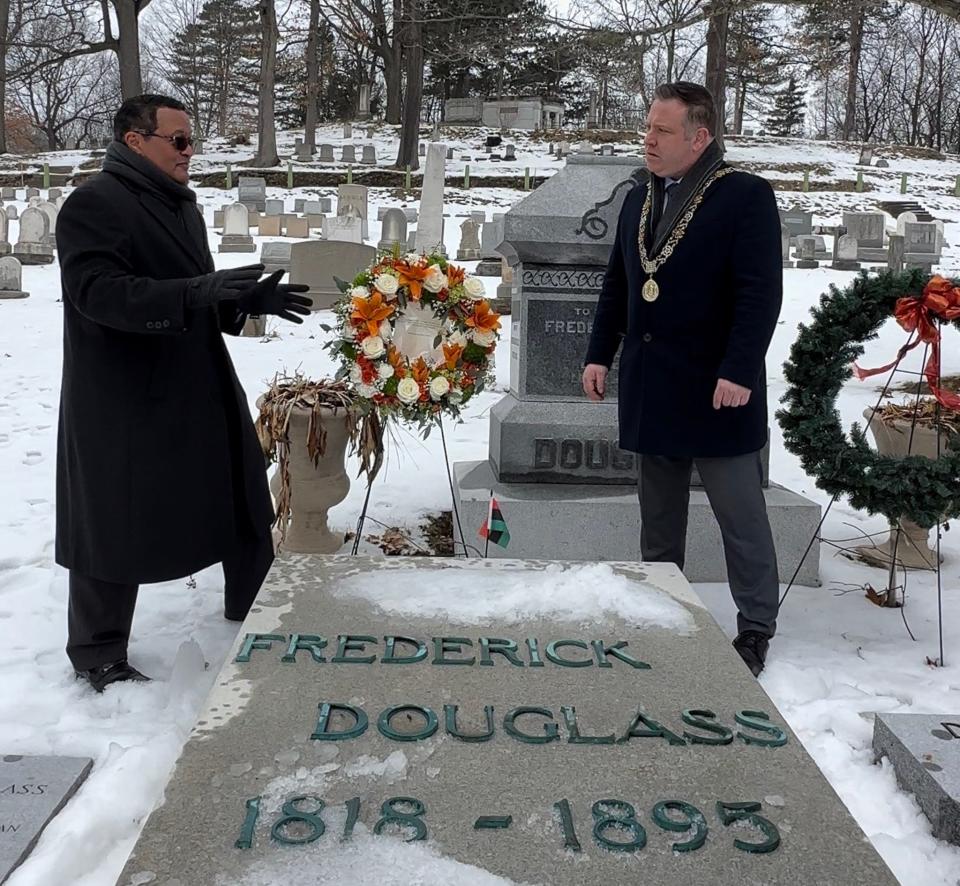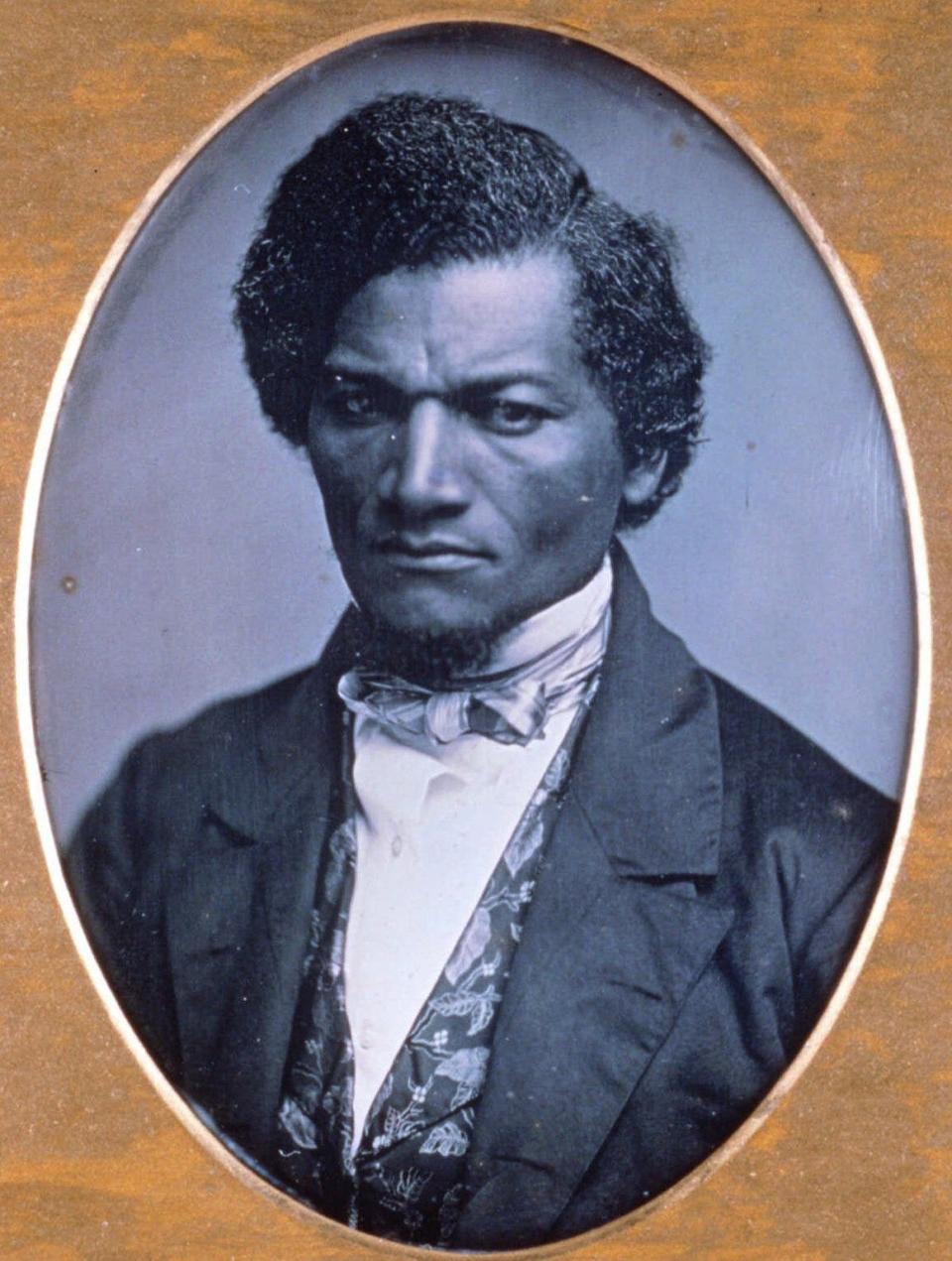The Irish connection: How Frederick Douglass became part of Cork, Ireland's history
- Oops!Something went wrong.Please try again later.
As Colm Kelleher stood in the Frederick Douglass Family Initiatives lobby in downtown Rochester, he snapped photos of artwork depicting the namesake orator and social reformer. Beaming, Kelleher spoke of Ireland, his home, and how green it looked from the window of an airplane on his way to western New York.
Kelleher is deputy mayor and former lord mayor of Cork, Ireland. He was one of two Cork officials who visited Rochester to explore joint educational opportunities between the two cities.
Why? Because of Frederick Douglass, whose legacy forever links Cork and Rochester.
Earlier that day, March 2, Kelleher and Kenneth B. Morris Jr., who is president of the Frederick Douglass Family Initiatives and a direct descendant of the famed abolitionist, placed a wreath on behalf of Cork at Douglass' gravesite in Mt. Hope Cemetery.
"It was a very poignant moment," Kelleher said. "Something I'll remember for the rest of my days."

What was Frederick Douglass' connection to Ireland?
Douglass turned to Ireland when he needed a safe harbor.
In 1845, Douglass' autobiography "Narrative of the Life of Frederick Douglass, an American Slave" was published, and the notoriety threatened his freedom.
"His enslaver would know where he was almost 24/7," Morris said.
A 27-year-old Douglass took refuge across the Atlantic Ocean to ensure his safety, where he engaged in a speaking tour on the abolition of slavery.

After visiting Ireland on tour, Douglass decided to stay for the remainder of 1845. His initial interest in the country centered around Irish liberator Daniel O'Connell.
"I despise any government which, while it boasts of liberty, is guilty of slavery, the greatest crime that can be committed by humanity against humanity," O'Connell said during a speech the year Douglass arrived.
After meeting O'Connell, Douglass was invited to speak at events. That same year, Ireland experienced a potato famine. One million people would eventually die. The American abolitionist experienced suffering from a different perspective.
"He really begins to think with an international mindset about fighting for human rights," Morris said.
On the day he left Ireland, Douglass wrote to American journalist William Lloyd Garrison, "I can truly say, I have spent some of the happiest moments of my life since landing in this country. I seem to have undergone a transformation. I live a new life."
PHOTOS:See the St. Patrick's Day Parade strolls through Rochester.
How does Ireland remain connected to Frederick Douglass?
Douglass' great-great-great-grandson Morris said that the warm feelings remain generations later. On a 2011 trip to Dublin, he remembers, a cab driver told him, "No family member of Frederick Douglass will ever pay a fare in my taxi."
As Kelleher and Cork city official Paul Moynihan spent time at the Frederick Douglass Family Initiatives offices on East Main Street, the planned site of a future downtown Frederick Douglass Museum, they both spoke of using the Douglass story to expand on a push to make Ireland an inclusive and accepting country.
And the impact Douglass had on Ireland is not forgotten there. A Cork abolitionist trail will attempt to retrace Douglass' steps during his time in the city.
More:Pittsford woman reflects on her time working with former President Jimmy Carter
More:How culturally affirming care is helping Buffalo residents heal from trauma
Contact Robert Bell at: rlbell@gannett.com. Follow him on Twitter: @byrobbell & Instagram: @byrobbell.
This coverage is only possible with support from our readers.
This article originally appeared on Rochester Democrat and Chronicle: How Frederick Douglass connects Cork, Ireland and Rochester NY

